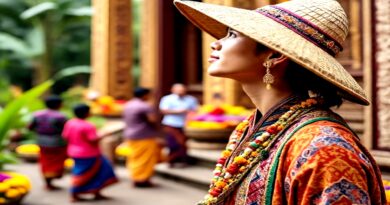Traditional vs Modern Art Styles Explained
Art has always been a reflection of human emotion, culture, and imagination. From the intricate cave paintings of early civilizations to the bold abstract expressions of the modern world, art has evolved with humanity itself. In this article, Traditional vs Modern Art Styles Explained, we’ll explore how both forms represent different eras, philosophies, and creative approaches yet remain deeply connected by one timeless element: the human need to express.
Understanding Traditional Art Styles.
Traditional art refers to the classic methods of creating visual masterpieces, often using paint, clay, stone, or fabric. These styles are deeply rooted in cultural traditions, religious beliefs, and historical contexts. Every brushstroke or carving in traditional art tells a story one passed down from generation to generation.
In traditional art, perfection, symmetry, and realism are often celebrated. Think of Renaissance paintings, Mughal miniatures, Japanese woodblock prints, or Islamic calligraphy each showcases discipline, patience, and adherence to specific cultural aesthetics. Artists spent years mastering techniques that represented not only their skill but also the values of their society.
For example, in South Asia, traditional art often depicts gods, royalty, or nature using vibrant colors and detailed patterns. Similarly, European classical art focused on realism, depth, and human anatomy striving to mirror life exactly as it appeared. Traditional art isn’t just about visuals; it’s about heritage and identity.
Understanding Modern Art Styles.
Now, let’s look at the second part of our topic: Traditional vs Modern Art Styles Explained through the lens of modernism. Modern art emerged in the late 19th and early 20th centuries, when artists began to break away from strict traditions. Instead of focusing on how accurately something was painted, modern artists focused on how something felt.
Movements like Impressionism, Cubism, Surrealism, and Abstract Expressionism changed the world’s understanding of creativity. Artists like Pablo Picasso, Vincent van Gogh, and Claude Monet challenged conventions. They used new techniques, distorted shapes, and experimented with colors to express emotion and thought rather than just reality.
Modern art also introduced mixed media using materials like metal, glass, or recycled objects to give new life to artistic expression. This style values creativity over conformity, meaning there’s no “right” or “wrong” way to create. Every piece is open to interpretation, inviting viewers to find their own meaning.
Key Differences: Traditional vs Modern Art Styles Explained.
The difference between traditional and modern art lies not just in technique, but in philosophy.
Purpose:
Traditional art aims to preserve culture and depict reality, while modern art focuses on individual emotion, innovation, and imagination.
Technique:
Traditional artists rely on classical training and established methods; modern artists often experiment freely with materials and concepts.
Subject:
Traditional works often center around religion, nature, and history. Modern art explores psychology, abstraction, and social commentary.
Meaning:
In traditional art, meaning is usually clear and intentional. In modern art, meaning can be personal, abstract, and subjective.
Simply put, traditional art seeks to represent the world as it is, while modern art tries to express the world as we feel it.
Cultural Importance of Traditional vs Modern Art Styles Explained.
Art doesn’t just decorate walls; it defines cultures. Traditional vs Modern Art Styles Explained isn’t about choosing one over the other it’s about understanding how both shape human civilization. Traditional art preserves history, giving us a glimpse into how people lived, believed, and dreamed centuries ago. It reminds us of our roots, our ancestors, and our collective identity.
Modern art, on the other hand, speaks the language of change. It captures modern struggles, technological evolution, and the search for identity in a fast-paced world. While traditional art connects us to the past, modern art reflects the present and imagines the future.
For example, a traditional landscape painting may depict a serene countryside, while a modern version might use bold strokes and abstract shapes to express the feeling of freedom rather than the scene itself.
Blending the Two: The Harmony Between Traditional and Modern Art.
Interestingly, the debate of Traditional vs Modern Art Styles Explained isn’t about separation it’s about evolution. Many artists today combine traditional techniques with modern concepts. This fusion keeps art alive, relevant, and exciting.
For instance, a modern digital artist might use traditional brush techniques on a digital canvas, or a sculptor might blend classical stone carving with modern metal structures. These hybrid forms show that art isn’t limited by time; it’s a living, evolving form of expression.
Art galleries around the world now showcase works that merge both styles celebrating heritage while embracing innovation. This proves that traditional and modern art are not rivals but partners in storytelling.
Emotional Connection: Traditional vs Modern Art Styles Explained.
Another key difference lies in the emotional experience they evoke. Traditional art often brings feelings of nostalgia, respect, and admiration for the past. It connects us with spirituality, culture, and legacy.
Modern art, however, often provokes thought, curiosity, or even confusion and that’s the point. It challenges the viewer to think differently, to interpret freely, and to engage emotionally with the unknown.
Both styles are emotional mirrors of their time. Whether it’s the peaceful gaze of a traditional portrait or the chaotic energy of an abstract painting, both connect us deeply with the artist’s inner world.
Why Both Matter Today.
In today’s digital era, both traditional and modern art have a powerful place. Museums preserve the timeless beauty of traditional masterpieces, while social media and digital platforms showcase innovative modern art to global audiences.
Understanding Traditional vs Modern Art Styles Explained helps us appreciate how art has grown not by replacing the old with the new, but by building upon it. Traditional art teaches discipline, patience, and respect for roots. Modern art teaches freedom, imagination, and courage to think differently.
Together, they form the complete spectrum of human creativity past, present, and future.
Conclusion: The Beauty in Diversity.
To sum up, Traditional vs Modern Art Styles Explained shows that art is not about old or new it’s about expression. Traditional art reflects our history, beliefs, and collective wisdom, while modern art expresses individuality, change, and innovation.
Every stroke, color, or form whether traditional or modern is part of the same grand narrative of human creativity. Instead of choosing one over the other, we should celebrate both, because together, they tell the story of who we were, who we are, and who we can become.



